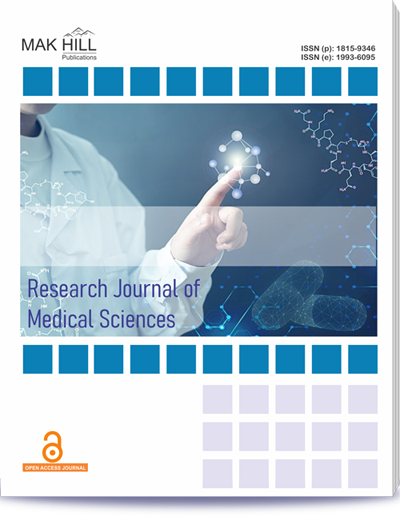
Research Journal of Medical Sciences
ISSN: Online 1993-6095ISSN: Print 1815-9346
Abstract
Maxillofacial fractures are a significant healthcare concern, often resulting from trauma such as accidents, sports injuries and assaults. They can have severe physical and psychological impacts on patients' quality of life. This study aims to investigate the utility and effectiveness of Multidetector Computed Tomography (MDCT) in assessing maxillofacial fractures, addressing the clinical significance of this imaging modality. The study design is a prospective observational study, with inclusion and exclusion criteria clearly defined to ensure a representative population of patients with suspected maxillofacial fractures. The data collection process is thorough and comprehensive, with the involvement of two experienced radiologists and resolution of discrepancies through consensus or involving a third radiologist. The study analyzed 25 participants with an average age of 42.72 years, with the majority under 30 years old. The majority were male, with 68% being male and 32% female. The most common type of maxillofacial fractures was maxillary sinus wall fracture (60%) followed by nasal (56%), orbital (44 %) and zygomatico‐maxillary complex (16 %) and mandibular (16 %). The study provides valuable insights into the epidemiology and pattern of maxillofacial injuries. MDCT is crucial for diagnosing and characterizing complex injuries, such as maxillary sinus wall fractures.
How to cite this article:
P. Revanth, Sathish Babu, S. Vinod and R.C. Rohit. Maxillofacial Fractures and Multidetector Computed Tomography: A Prospective Cross‐Sectional Approach.
DOI: https://doi.org/10.36478/10.36478/makrjms.2024.8.9.13
URL: https://www.makhillpublications.co/view-article/1815-9346/10.36478/makrjms.2024.8.9.13